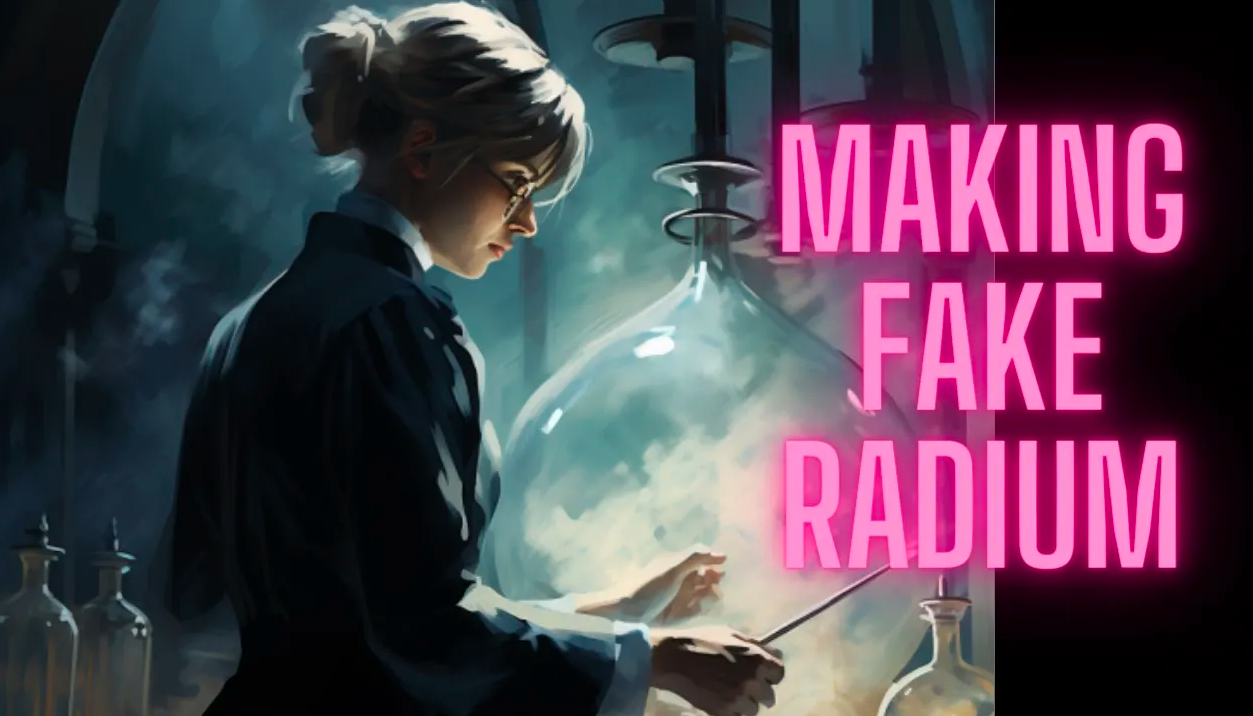Creating Fake Radium
Welcome to Andy’s Art Lab! Today, we’ll look at casting some Radium out of Resin, don’t worry it’s fake 😁. My daughter is studying Marrie Currie who discovered Radium and she needed a ‘prop’ to help with her report and speech for her science project.
This experiment used a number of mediums from digital sculpting and design to 3D Printing to Silicon mold making and finally to casting resin for the final result.
3D Model and Printing:
I started the process off by printing a 3D model with my trusty Creality Ender 3Max that I had made in Tinkercad. Next, I had to give it a bit of sanding and a primer. Then, I applied a metallic plasticoat of gloss spray paint on top of it.
Creating a Silicon Mold:
One key thing to remember when creating a silicone mold is that it will replicate the surface it’s molding. In my case, I wanted a gloss, so I tried my best to put a nice gloss coat on it so that the silicone would take up those properties. Once it was dry and ready, it was time to create the silicone mold. I degassed the mold in my vacuum chamber. If you want to see the process of creating a vacuum chamber, check out my other video.
I poured the silicone into the mold, removing any bubbles. I used a toilet paper tube as the mold housing. One thing I should have done was coat it with beeswax to prevent the silicone from absorbing into it. Starting from the bottom up, I pushed out any air when filling it. Finally, I finished off the top of the silicone mold.
De-molding:
After waiting for 24 hours, I was able to open it up. One thing I noticed, and this is just part of my learning process, was that the bottom didn’t set completely. It could be due to the sticky tape material or the reaction with the 3dprinted item that caused the silicon to not set in that area.
Using a new blade, I made a jagged cut to remove the mold. If you’re interested in silicone mold making, I highly recommend checking out Robert’s Tolones channel here on YouTube. He has years of experience.
Resin Casting:
Once the mold was out, I filled it with resin. I mixed up some glow-in-the-dark green resin. I’m still figuring out my resin mixtures, so I tend to make too much. I used the excess resin to make bookmarks.
After giving it a tap to release any air bubbles, I let it dry for a couple of days. It was time to de-mold. I had overpoured my molds, so the resin went over the top. I used a trimmer tool to remove any excess resin and tidy up the edges.
Finished Product:
And there you have it, the finished product and the complete process.



